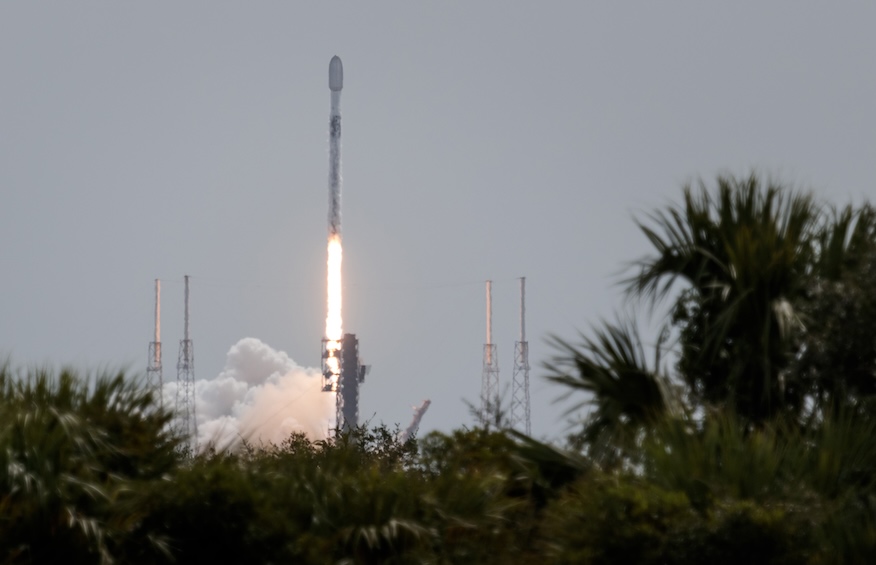
Update 1:12 pm EDT: SpaceX has confirmed the deployment of all 21 Starlink satellites.
SpaceX managed to find good enough weather to launch its 85th Falcon 9 rocket of the year late Thursday morning. The mission, called Starlink 8-11, added 21 more Starlink satellites to the company’s megaconstellation. It was delayed a day due to bad weather in the recovery area on Wednesday.
This launch marked the 7,000th Starlink satellite launched to date, according to statistics compiled by Jonathan McDowell, an astronomer and orbital tracker expert. Liftoff from pad 40 at the Cape Canaveral Space Force Station occurred at 11:33 am EDT (1533 UTC).
The Falcon 9 first stage booster supporting this mission, tail number B1077 in the SpaceX fleet launched for a 15th time on this mission. He previously supported the launches of the Crew-5 and CRS-28 Dragon missions to the International Space Station; the NG-20 Cygnus flight to orbiting advance; and eight Starlink missions.
About 8.5 minutes after liftoff, B1077 landed on the SpaceX drone, “Read the Instructions”, and the recovery ship, “Bob”, was used to remove half of the cargo hull from the Atlantic Ocean. This was the 91st JRTI landing and the 344th reinforcement landing to date.
Among the 21 Starlink satellites on board the rocket were 13 that included Direct to Cell capabilities. It brings the total number of DTC Starlink satellites up to 194 launched till date.
Time, time go
The mission comes as SpaceX and the Polaris program continue to monitor the weather outlook to see if they can find a window of good enough weather to support the Polaris Dawn mission. At issue are the conditions around Florida during the end of the flight, when the Crew Dragon Resilience and its four-member crew would need to splashdown.
The mission lasts five full days, with splashdown set for the sixth day. Originally, the Falcon 9 supporting this launch was deployed from Launch Complex 39A (LC-39A) at the Kennedy Space Center on Tuesday, August 27.
However, the flight was scuttled first due to a ground systems problem and later connected to the weather forecast. The opportunities are not endless though.
Eventually, SpaceX needs to convert the LC-39A pad from a Falcon 9 to a Falcon Heavy configuration, a process that takes weeks. The change is to support the launch of NASA’s Europa Clipper mission, which was organized by NASA’s Launch Services Program (LSP).
The launch window for Europa Clipper opens on October 10.
“SpaceX continues to improve and reduce LC-39A pad conversion processing times when changing configurations between Falcon 9 and Falcon Heavy. LSP will use these improvements for the Europa Clipper mission,” said Tim Dunn, LSP Senior Launch Director, to Spaceflight Now in a statement. “The exact number of days required for the configuration change has not been finalized, but it will be less than 25 days.”
SpaceX has not said whether it plans to use Space Launch Complex 40 (SLC-40) as an alternative launch site for the Polaris Dawn mission, if they run out of time to launch before the conversion work needs to happen. It is currently scheduled to launch its first Crew Dragon mission from that pad when it sends NASA astronaut Nick Hague and Russian cosmonaut Aleksandr Gorbunov to the ISS on the Crew-9 mission no earlier than September 24.
Stay busy in quarantine with some training flights, review the timeline, stay fit and focus on the mission ahead. Grateful for the amazing team and this incredible opportunity. The big launch day is approaching. https://t.co/273eEpwzII pic.twitter.com/OxkbhZYVNi
– Jared Isaacman (@rookisaacman) September 1, 2024

